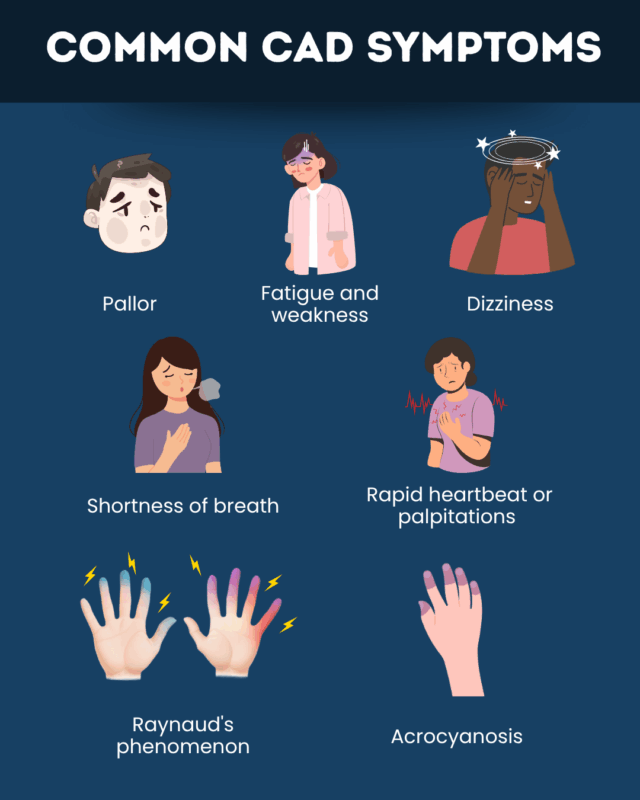Symptoms of cold agglutinin disease
Last updated Sept. 25, 2025, by Marisa Wexler, MS

Cold agglutinin disease (CAD) is a rare autoimmune disorder that causes red blood cells to be destroyed at low temperatures, leading to symptoms such as fatigue and skin discoloration.
Knowing how to recognize CAD early is essential to get a prompt and accurate diagnosis. Then, patients can receive optimal care to help manage symptoms, prevent complications, and improve their quality of life.
How CAD symptoms develop
CAD is caused by self-reactive antibodies, called cold agglutinins, which bind to red blood cells at cold temperatures. This causes the cells, which normally carry oxygen through the bloodstream, to clump together and be marked for destruction, a process called hemolysis.
The clumping and destruction of red blood cells leads to anemia (low red blood cell counts) and circulatory problems that cause CAD symptoms. Anemia symptoms in CAD, occurring because the body’s tissues can’t get enough oxygen, include fatigue and weakness, while circulatory problems can cause pain and skin discoloration.
There are two types of CAD: primary CAD, which develops independently of other health issues, and secondary CAD, which arises as a complication of other health problems like infections or cancer. Because hemolysis triggered by cold agglutinins marks both primary and secondary CAD, they generally result in similar symptoms. Still, secondary CAD may have some symptom variability depending on the underlying health conditions.
Common symptoms of CAD
Symptoms and early signs of CAD may vary from person to person. Still, the most commonly reported anemia-related symptoms include:
- pallor
- fatigue
- weakness
- dizziness
- shortness of breath
- rapid heartbeat or palpitations.
The most frequent circulatory symptoms associated with cold exposure and subsequent red blood cell clumping and obstruction include:
- Raynaud’s phenomenon, a condition where extremities become cold, numb, and painful, and turn white or blue
- acrocyanosis, which refers to painless blue discoloration of the extremities.

Other symptoms to be aware of
The hemolysis in CAD can also lead to:
- dark urine, due to an increase of free hemoglobin, the red-colored protein in red blood cells that transports oxygen, in the bloodstream, and its excretion in the urine
- jaundice, or yellowing of the skin and whites of the eyes, caused by an accumulation of bilirubin, a yellow-reddish waste product of hemolysis, in tissues.
In severe cases, patients may experience more serious symptoms and signs of CAD, including:
- chest pain
- reduced alertness
- confusion
- temporary loss of consciousness
- abnormalities in heart rate and blood pressure
- ulcers on fingertips.
Increasing evidence suggests people with CAD are also at a higher risk of thrombotic events, when a blood clot blocks blood flow.
Symptom severity and triggers
The severity of CAD can vary considerably from person to person. Some people may never experience any bothersome symptoms, whereas others can have severe ones that significantly affect daily life.
Several factors can affect the intensity of CAD symptoms, including:
- Variations in cold agglutinins: CAD is usually more severe in people with higher levels of cold agglutinins and/or antibodies that are more active at warmer temperatures.
- Other biological factors: CAD is generally more severe in patients who have higher blood levels of certain immune proteins involved in driving hemolysis, and less severe in those whose bodies are able to better replenish blood cells.
- CAD type: Secondary CAD is associated with underlying health conditions like infections and cancer, which can substantially affect patients’ disease experience.
- Climate: Because CAD symptoms can be triggered by cold, the disease is usually more apparent among people who live in cooler parts of the world.
Cold sensitivity in CAD — a worsening of symptoms in response to cold temperatures — is very common, reported in the vast majority of people living with CAD. In addition to cold, symptoms can worsen in response to infection, major trauma, or surgery.
Severe symptoms of CAD can lead to fatal complications, but this is not common. Still, some studies highlight a higher risk of death among people with CAD, and especially during winter.
Cold Agglutinin Disease News is strictly a news and information website about the disease. It does not provide medical advice, diagnosis, or treatment. This content is not intended to be a substitute for professional medical advice, diagnosis, or treatment. Always seek the advice of your physician or other qualified health provider with any questions you may have regarding a medical condition. Never disregard professional medical advice or delay in seeking it because of something you have read on this website.
Recent Posts
- Real-world study confirms long-term safety of Enjaymo for CAD
- After months of fatigue, feeling better is what I want for Christmas
- Man’s case shows bacterial lung infection can ‘provoke’ clots, CAD
- Living with cold agglutinin disease involves cruel curveballs
- Gastric lymphoma found to be hidden cause of refractory CAD
- New CAD treatments, like reading progress, prove growth is possible
- ANX1502 proof-of-concept trial to wrap up next year, Annexon says
- What if Sadie Hawkins Day made me the doctor?
- Iptacopan rapidly stops red blood cell damage in rare CAD case
- Auburn isn’t sticking to the plan, but I am as I battle CAD fatigue
